'Supermoon' brightens up skies for stargazers
- Published
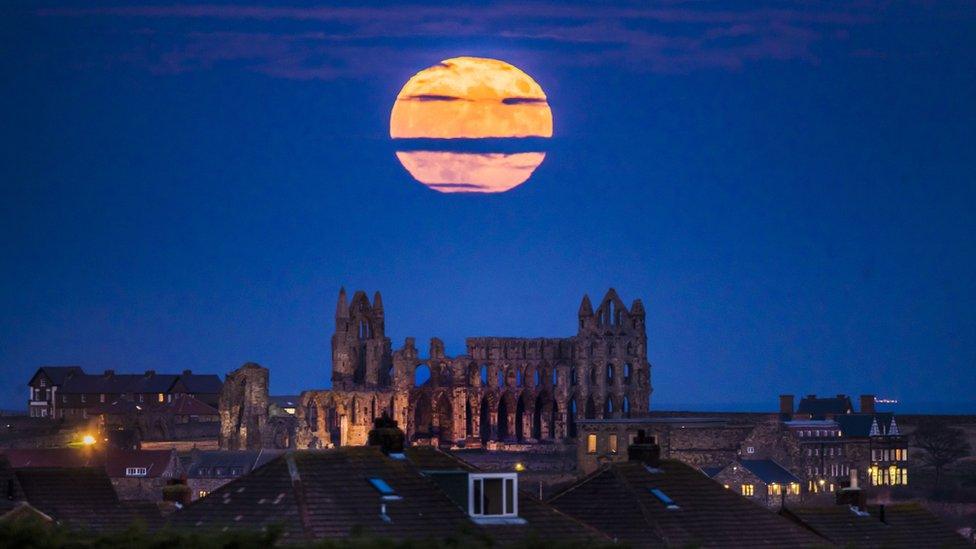
The "supermoon" rising above Whitby Abbey in Yorkshire.
Skywatchers have enjoyed spectacular views of this month's "supermoon" - when the Moon appears larger and brighter in the sky.
The supermoon phenomenon happens when the Moon reaches its closest point to Earth, known as a perigee Moon.
The Moon circuits the Earth in an elliptical or oval orbit - a supermoon occurs when the perigee Moon is also a full Moon.
The supermoon was the last opportunity to see one in 2017.
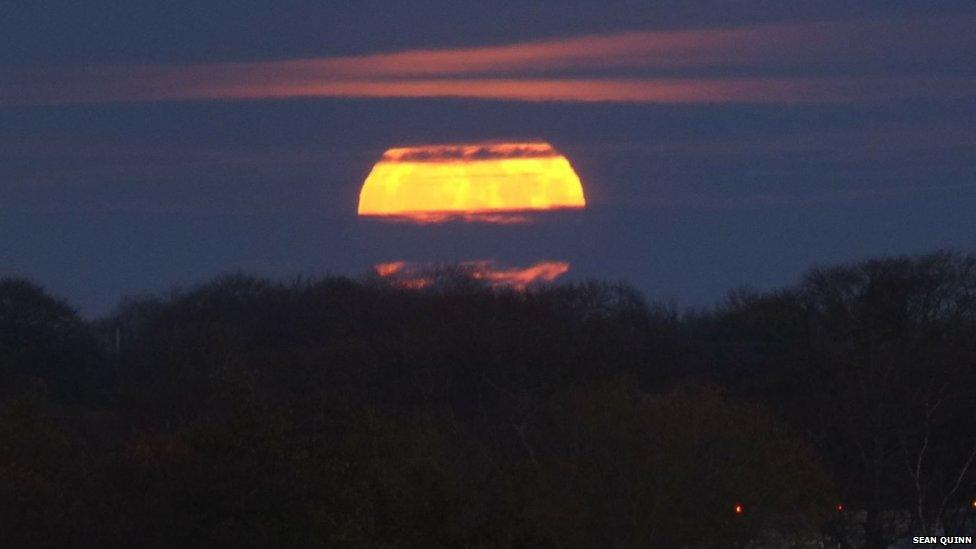
The moon loomed above Yeadon, in Leeds
To observers, the Moon appears about 7% larger and 15% brighter, although the difference is barely noticeable to the human eye.
Last year the Moon made its closest approach to Earth since 1948 - it will not be that close again until 25 November 2034.
Nasa has called this weekend's sighting the first in a "supermoon trilogy", external over the next two months, with others to come on 1 January and 31 January.
December's full Moon is traditionally known as the cold Moon.
The full Moon on Sunday afternoon - when it sits opposite the sun in the sky - was 222,761 miles from Earth, closer than its average 238,900 miles.

The supermoon over the Christmas light trail at Blenheim Palace
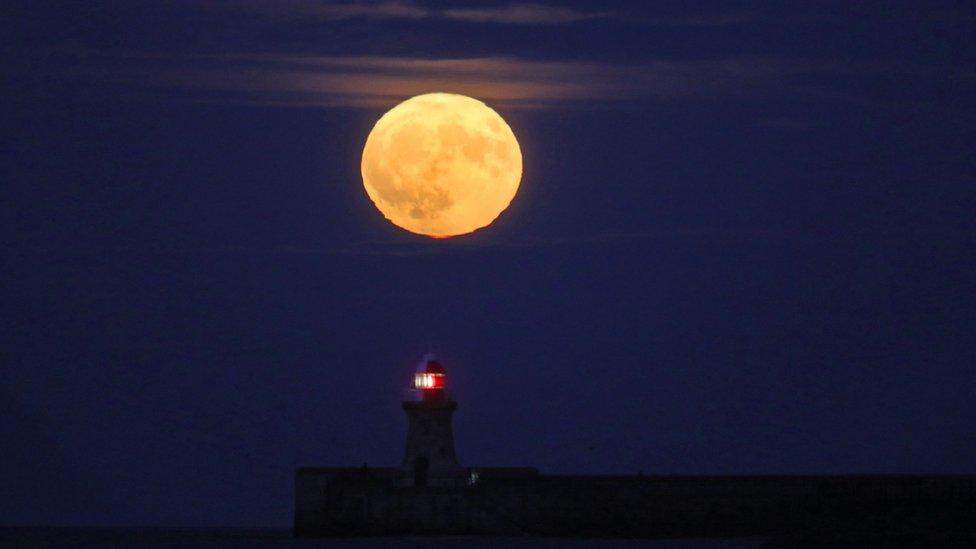
The supermoon has also been seen over a lighthouse in South Shields, South Tyneside.
This Moon's elliptical orbit means that its distance from Earth is not constant but varies across a full orbit.
But within this uneven orbit there are further variations caused by the Earth's movements around the Sun.
These mean that the perigee - the closest approach - and full moon are not always in sync.
But occasions when the perigee and full moon coincide have become known as supermoons.
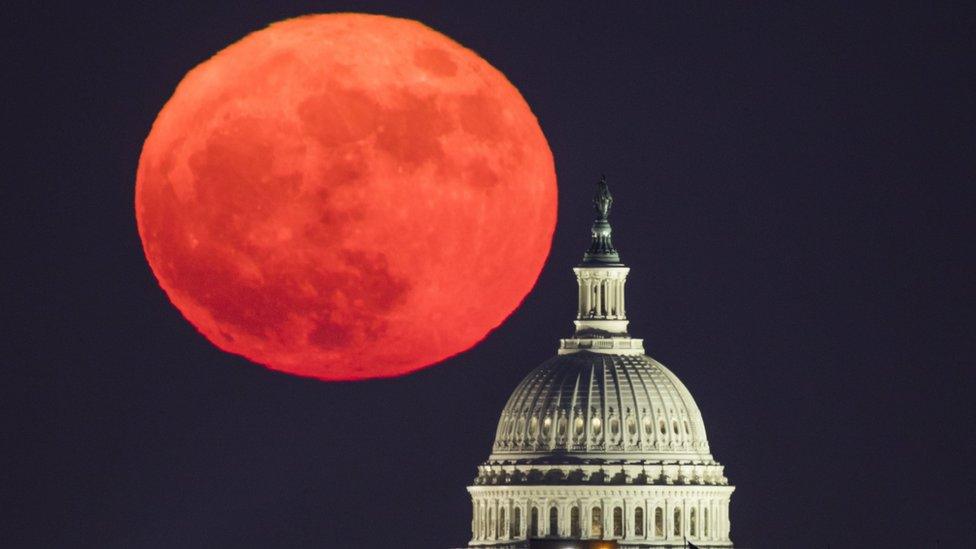
The supermoon was visible around the world, with this view coming from Washington
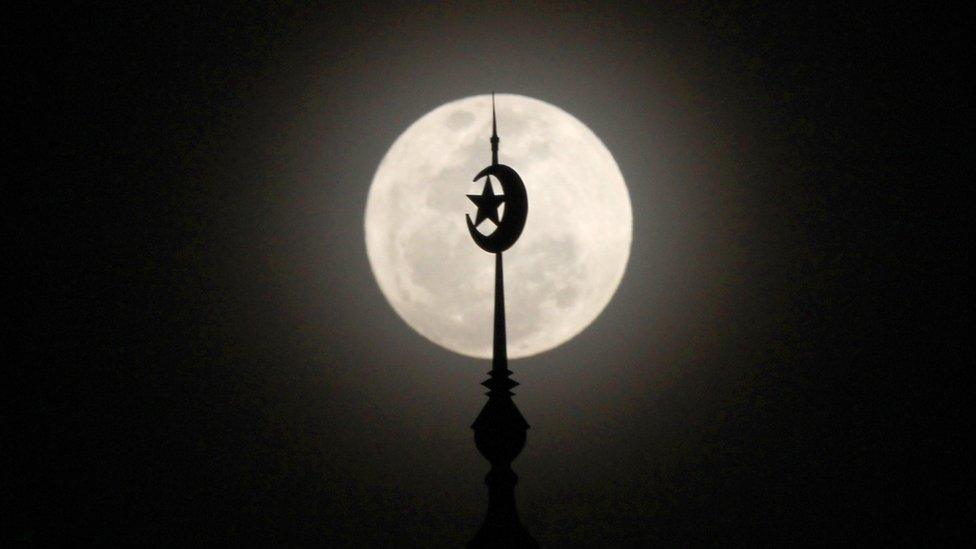
This picture of the supermoon was taken in Jakarta, Indonesia